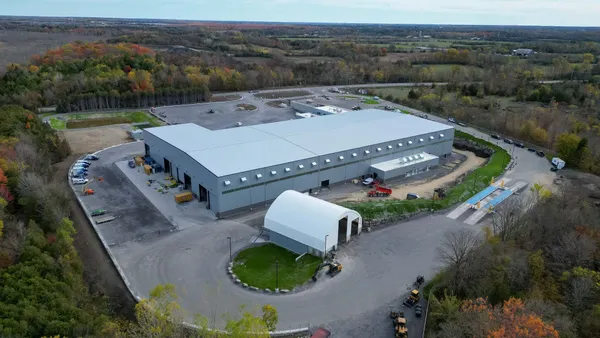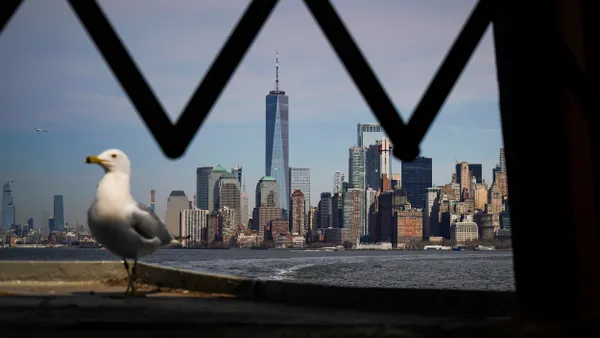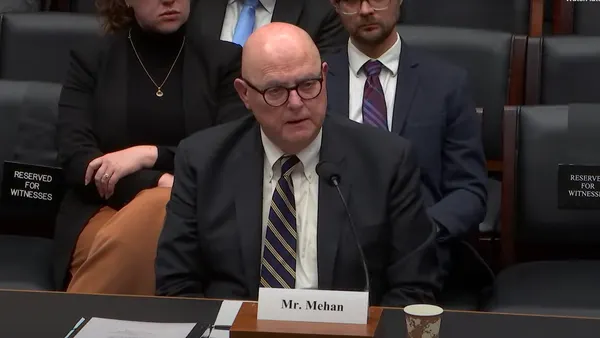Note: This story has been updated to include a response from Council Member Antonio Reynoso
Dive Brief:
- Efforts to pass Intro 495-C, a transfer station capacity reduction bill, appear to have come up short in the New York City Council yet again. This follows years of intense lobbying by the local waste industry, lingering questions about the plan's environmental impact and the last-minute withdrawal of at least one key co-sponsor.
- In its latest iteration, the bill would have directed the Department of Sanitation's commissioner to decide on cuts in permitted capacity for four "overconcentrated districts" in the the Bronx, Brooklyn and Queens by Oct. 2018. Depending on the location, and type of transfer station, cuts ranged from 33% to 50%. Exemptions and provisions were included for reasons such as operating during emergencies, accepting organics or exporting waste via rail and barge.
- Technically, the bill's fate isn't sealed until the council's final stated meeting of the session ends today. However, DSNY hasn't released a required environmental assessment yet, a committee vote has yet to occur, the chair of that committee is out on paternity leave and multiple sources (including one of the bill's original co-sponsors) have confirmed they don't expect it to move forward this year. New legislation may be introduced in 2018.
Dive Insight:
Intro 495-C is the latest in a long line of complex, and often delayed, plans to address waste infrastructure equity within the city following the 2001 Fresh Kills Landfill closure. This bill, originally introduced in 2014, is a successor to legislation that suffered a similar fate at the end of the council's last term in 2013. At that time, sponsors lacked enough votes to override a potential veto from former Mayor Michael Bloomberg. This time they had support from Mayor Bill de Blasio, but couldn't reach a majority of 26 co-sponsors.
In New York, it's customary to defer to the members of districts directly affected by any legislation. North Brooklyn was covered by primary sponsors Antonio Reynoso and Steve Levin. The South Bronx wasn't officially locked in, but advocates claim they had the key vote of Rafael Salamanca. His office did not confirm that position prior to publication.
That left I. Daneek Miller of Queens, one of the original three sponsors. Miller's support had begun to waver in recent weeks and appeared to evaporate heading into the weekend. Once this was confirmed Dec. 18, labor and environmental organizations supporting 495-C released a joint press release to "condemn" Miller and make veiled accusations of industry influence. Campaign finance records do show that Miller received six successive contributions on Sept. 19, from employees or family members involved with area company Royal Waste Services.
Miller issued the following statement in response Dec. 19, saying, "Without question, we absolutely remain committed to passing waste equity legislation that is both sustainable and environmentally sensible for Southeast Queens and the City of New York. I will continue to work with my colleagues, including our newly elected members, to see thoughtful and intelligent legislation come to fruition, and for anyone to suggest otherwise is disingenuous."
Reynoso, in a response on Twitter, also took issue with the notion that Miller was directly responsible for the bill's failure. "@IDaneekMiller did not kill this bill. It is way more complicated and nuanced than that. The advocates should take a step back and note he was one of the strongest advocates for waste equity in the NYC Council over the last 4 years," he wrote on the afternoon of Dec. 19.
In recent weeks, supporters of 495-C had recognized it still wasn't a sure thing — especially when factoring in the hectic nature of any council term ending — but still sounded confident until this week.
Though waste industry representatives had begun to sound similarly confident that things would break their way as the deadline approached. The National Waste & Recycling Association's local chapter director published an editorial in Crain's New York Dec. 18, criticizing the lack of transparency around final negotiations and the absence of DSNY's required environmental assessment. New Yorkers for Responsible Waste Management, a group representing smaller companies, has also been questioning the bill's full ramifications and criticizing the process behind it. Other notable groups such as the Real Estate Board of New York had joined in opposition.
The industry position has often been that it's best to wait for the city's final two marine transfer stations to open and see what infrastructure needs look like then, because DSNY still accounts for a sizable portion of business at some private transfer stations. Though supporters of 495-C, or similar plans, say that even in areas with existing marine transfer stations, the truck traffic at private transfer stations hasn't abated.
Trying to hash out such wide-ranging and long-term plans at the end of any legislative session is rarely seen as ideal. When factoring in the ongoing discussion about commercial waste franchising the issue is even more fraught. The apparent failure of 495-C is yet another sign that achieving any kind of agreement between industry and those that seek to limit it is still as difficult as ever in New York.









